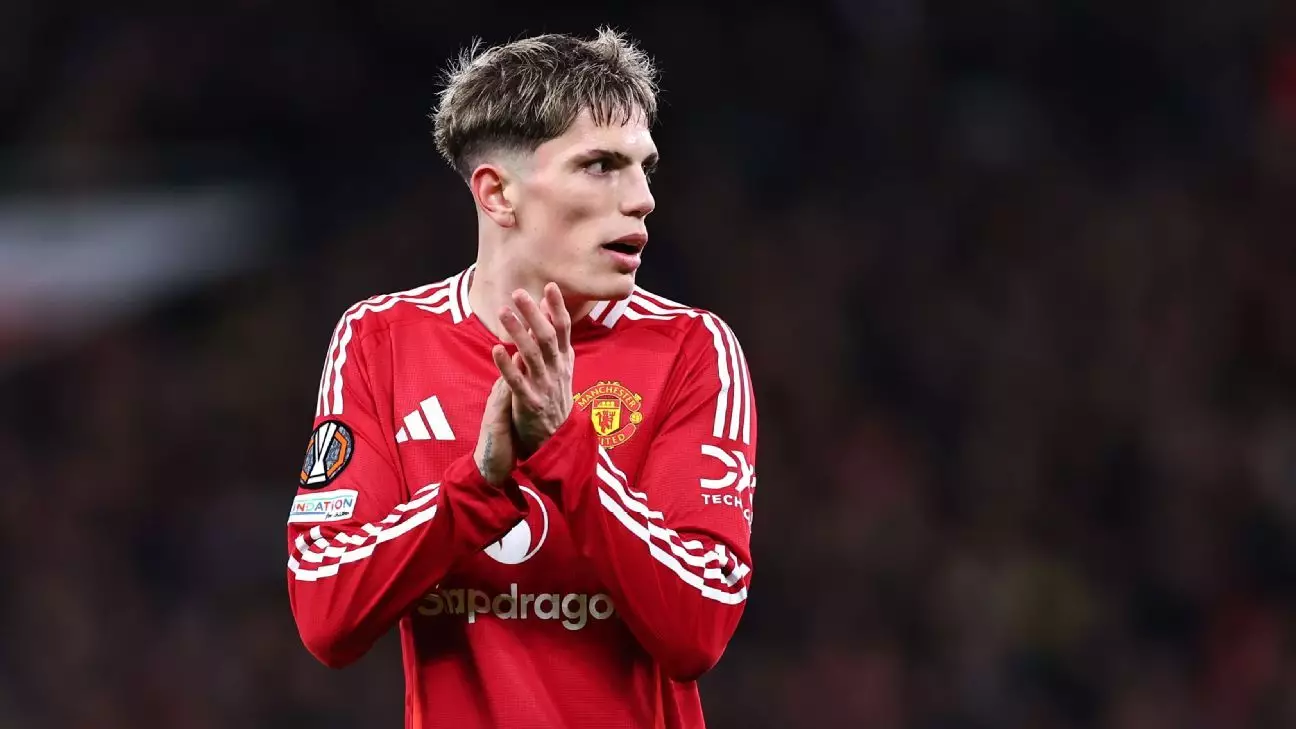In the ever-changing landscape of European football, clubs are constantly on the hunt for emerging talent that can make an immediate impact. One player in the spotlight is Manchester United’s Alejandro Garnacho. The talented winger has garnered attention from multiple clubs, with Aston Villa being the latest to express interest. It’s intriguing to witness how rapidly Garnacho’s stock has risen after a productive season where he netted 11 goals and made nine assists. Despite his impressive stats, he found himself relegated to a bench role during the crucial Europa League final against Tottenham. This juxtaposition reveals a deeper issue within team dynamics and the challenges that come with nurturing young players effectively within high-stakes settings.
Aston Villa’s pursuit of Garnacho is indicative of their ambition to climb the Premier League rankings. However, Manchester United’s rumored valuation of £70 million raises questions about financial prudence, particularly in a market increasingly saturated with young talent. Chelsea and Bayer Leverkusen are also in the mix, showing how competitive this transfer market can get. For Garnacho, a decision looms; will he seize the opportunity for more consistent playing time, or remain at Old Trafford in hopes of maturing further under the guidance of seasoned professionals?
Historic Moves: Wirtz to Liverpool
Meanwhile, Liverpool is on the verge of a significant addition to their squad by securing Florian Wirtz from Bayer Leverkusen with a reported fee of €150 million—an amount that underscores the escalating prices of young forward talent in football. The attacking midfielder’s imminent arrival marks him as Liverpool’s most expensive signing ever, setting a high benchmark not only for the club but for transfer negotiations across Europe. Wirtz is expected to bolster a squad that already includes his former teammate Jeremie Frimpong, making for familiar chemistry that could provide an instant impact.
The deal’s complexity—already touching on personal agreements and medical examinations—demonstrates the meticulous planning that modern football clubs employ. It provokes beams of excitement for supporters as they await potential game-changing performances. But while Liverpool anticipates Wirtz’s influence on their season, the flip side brings scrutiny concerning how such hefty sums, especially in the wake of a challenging season with inconsistent results, will affect the club’s long-term financial viability.
Emerging Stars and Shifting Fortunes
In the heart of this bustling transfer window lie clubs like Manchester City, who are actively engaging with the next generation by closing in on young Norwegian sensation Sverre Nypan from Rosenborg. With rampant interest from multiple Premier League teams, City’s acquisition speaks volumes of their strategy to develop young talent alongside an established winning culture. Moreover, the intention to loan him back signals a commitment to polishing his potential before fast-tracking him into elite football. Nypan’s representation in Norway’s under-21 squad further emphasizes his promise.
Not to be overlooked, Bayern Munich’s Leroy Sané is taking his talents to Galatasaray, seeking a “new challenge” after contributing significantly to Bayern’s trophy-laden era. While this persona of seeking fresh adventures is not novel, it sheds light on how players evolve post-success. By joining a club in Turkey, Sané might find revitalization, sparking curiosity about how a departure from a Bundesliga giant could alter his trajectory as a footballer.
Strategic Movements: A Reflection on Team Composition
The ongoing transfer activity illuminates not just individual transactions but also the broader goal of cultivating competitive squads. Liverpool’s additional targets for a center back—Jarell Quansah and Loïc Badé—speak to their forward-thinking approach in building for the future, particularly after the recent departure of stalwart Jonathan Tah to Bayern Munich. With young talents often needing time to adapt to top-flight football, it is essential to evaluate the risk versus reward of fostering young players aiming for professional maturity.
Arsenals’ pursuit of Mart�n Zubimendi, despite interest from a colossal club like Real Madrid, indicates a strategic shift towards addressing their midfield’s long-term needs rather than immediate gratification. Clubs like Manchester United deliberating over the future of players such as Garnacho point to the complexity of balancing squad depth and development with the palpable pressure to achieve immediate success in a fan-driven, results-oriented sport.
As pressure mounts upon clubs to tread the delicate tightrope of spending and fiscal responsibility, the narrative surrounding these transfers will shape the landscape of European football for years to come. The spectacle of upcoming seasons will further reveal the efficacy of these investments, and whether the vision of championship glory translates into tangible success on the pitch.

